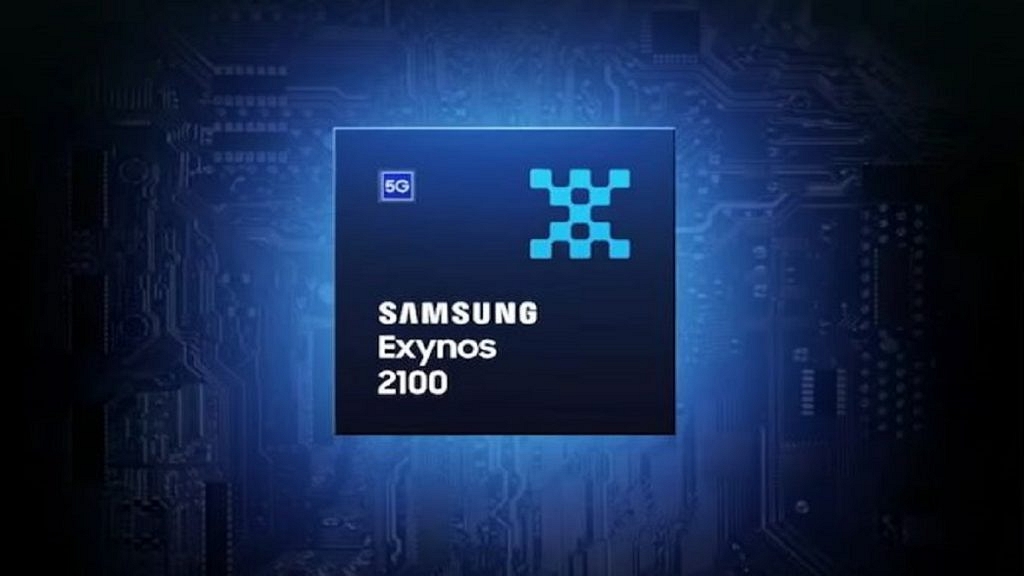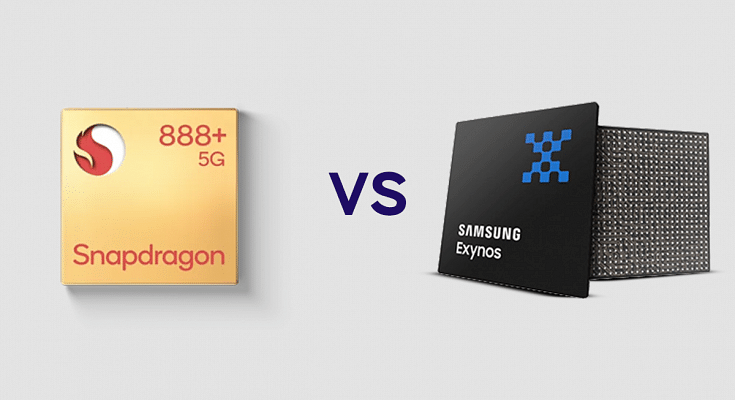Key Highlights
- We compare the Snapdragon 888 and Exynos 2100 chipsets
- Snapdragon 888 is used by phones like the OnePlus 9 Pro, iQOO 9 SE
- Samsung Galaxy S series is powered by the Exynos 2100
Among the processors, the two close competitors in the Android world are the Snapdragon 888 and Exynos 2100. Both the Snapdragon 888 and Exynos 2100 are 5nm chipsets; as a result of the transition to smaller node size, they perform better and use less power than their predecessors did. So, without further ado, let’s find out who wins the battle between the Qualcomm Snapdragon 888 and Samsung Exynos 2100.
Snapdragon 888 Vs Exynos 2100: CPU Performance
The CPU cores on both chips are similar, as is their configuration. The Snapdragon 888 has an octa-core CPU featuring the new Cortex-X1 core clocked at 2.84GHz. Samsung manufactured the flagship Qualcomm chipset, which is also made using the 5nm process.
On the other hand, the Samsung Exynos 2100 follows the same octa-core core design as the Snapdragon chip. It employs 5nm fabrication and ARM cores. It has eight CPUs built on tri-cluster architecture. The Cortex-X1 core runs at 2.9GHz, three A78 cores run at 2.8GHz, and four A55 cores running at 2.2GHz on the Exynos 2100.
Snapdragon 888 Vs Exynos 2100: GPU Performance
The Adreno 660 GPU is used by the Snapdragon 888 CPU. It delivers 818MHz of GPU frequency. The graphics architecture Adreno 660 on chipsets is capable to render any wide-ranging graphics without hitches or lags.

Coming to Exynos 2100, the Mali-G78 GPU offers sustained performance improvements of up to 46 percent. While its diverse graphics processing technologies facilitate decent gaming and mixed reality experiences. Meanwhile, the AMIGO technology delivers stable frame rates.
Snapdragon 888 Vs Exynos 2100: Connectivity
For the flagship processors, the two manufacturers have chosen to use an integrated 5G modem. However, Qualcomm leads the industry in terms of radios and 5G. The integrated X60 5G modem in the Snapdragon 888 boasts a maximum download speed of 7.5Gbps and a maximum upload speed of 3Gbps. It supports Carrier Aggregation and the mmWave and sub-6GHz bands. With Snapdragon 888, you also receive compatibility with Bluetooth 5.2 and WiFi 6E technology.
On the other hand, Samsung created its own internal 5G modem, which is also built inside the Exynos 2100 chipset. Theoretically, it can download data at speeds of up to 7.3Gbps and upload it at speeds of up to 3.6Gbps. Exynos 2100 also supports WiFi 6E and Bluetooth 5.2, similar to Snapdragon 888. Both the chipsets support mmWave and sub-6GHz spectrums.
